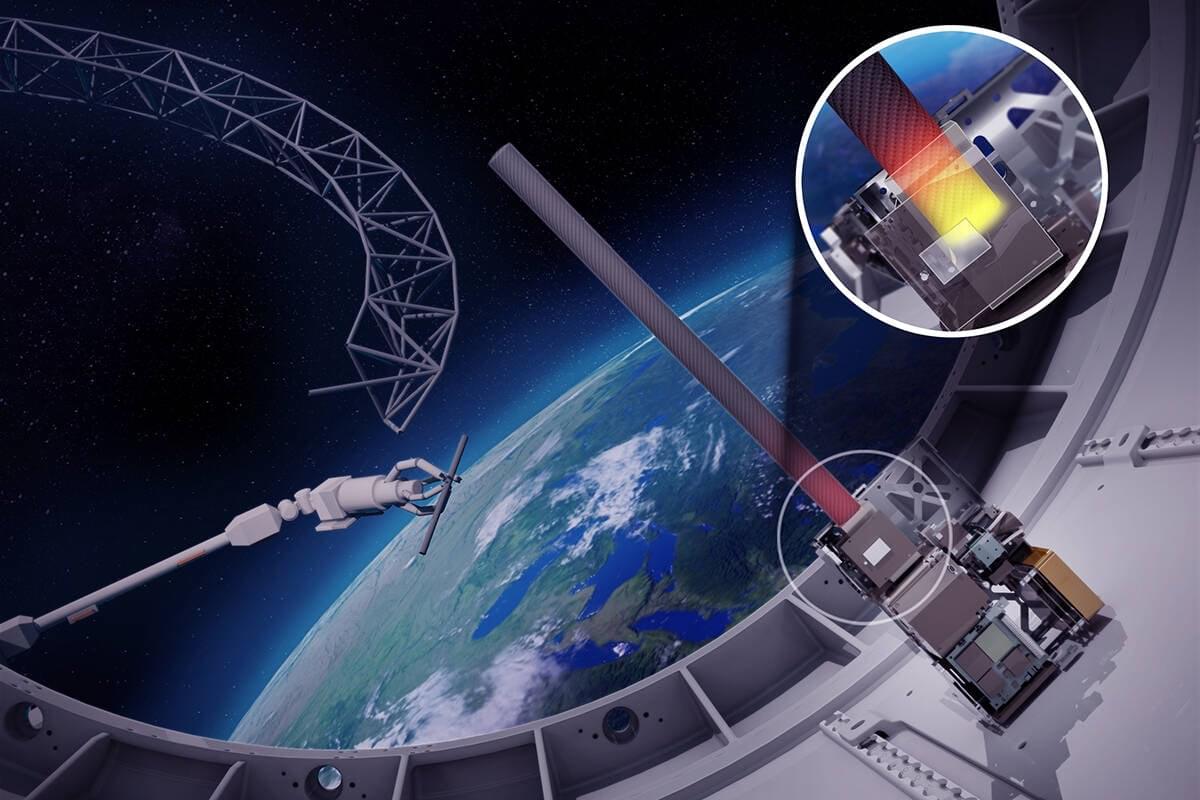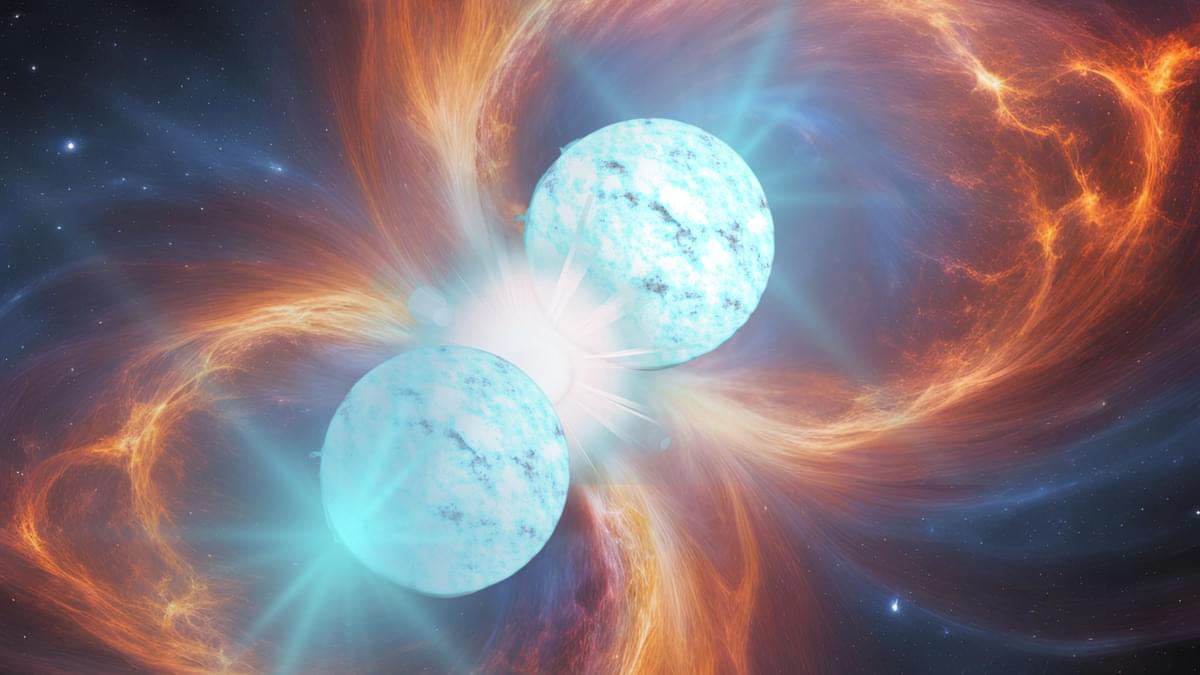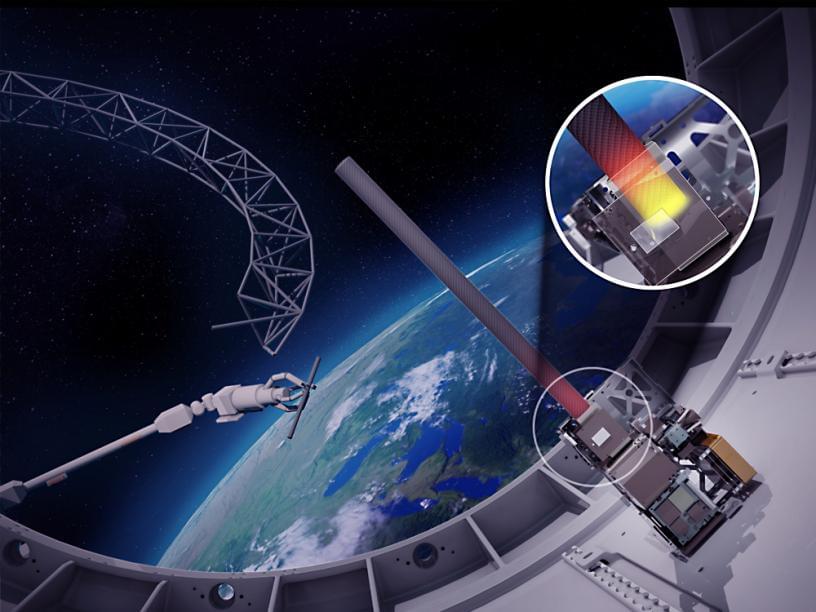Previous NOM4D experiments have gone so well, says project leader, that it’s time to get real.


Earth is 4.5 billion years old… modern humans are only 300,000 years old. The history of our species on this planet is incredible, but there are theories that humankind is actually much more spread out across the universe!
This is Unveiled, giving you incredible answers to extraordinary questions!
Find more mind-bending videos here:
What If Humanity Was a Type II Civilization? — • What If Humanity Was A Type II Civili…
What If Humanity Was a Type IV Civilization? — • What If Humanity Was A Type IV Civili…
Are you constantly curious? Then subscribe for more from Unveiled — https://wmojo.com/unveiled-subscribe.
#Space #Science #WhatIf

“Just like tuning forks of different material will have different pure tones, remnants described by different equations of state will ring down at different frequencies,” Rezzolla said in a statement. “The detection of this signal thus has the potential to reveal what neutron stars are made of.”
Gravitational waves were first suggested by Albert Einstein in this 1915 theory of gravity, known as general relativity.

Astronomer Calvin Leung was excited last summer to crunch data from a newly commissioned radio telescope to precisely pinpoint the origin of repeated bursts of intense radio waves—so-called fast radio bursts (FRBs)—emanating from somewhere in the northern constellation Ursa Minor.
Leung, a Miller Postdoctoral Fellowship recipient at the University of California, Berkeley, hopes eventually to understand the origins of these mysterious bursts and use them as probes to trace the large-scale structure of the universe, a key to its origin and evolution. He had written most of the computer code that allowed him and his colleagues to combine data from several telescopes to triangulate the position of a burst to within a hair’s width at arm’s length.
The excitement turned to perplexity when his collaborators on the Canadian Hydrogen Intensity Mapping Experiment (CHIME) turned optical telescopes on the spot and discovered that the source was in the distant outskirts of a long-dead elliptical galaxy that by all rights should not contain the kind of star thought to produce these bursts.

Based on outstanding technical progress by research teams to date, DARPA has pivoted the third and final phase of its NOM4D (pronounced nō- mad) program[1] from planned further laboratory testing to conducting a pair of small-scale orbital demonstrations to evaluate novel materials and assembly processes in space.
As commercial space companies continue to expand access to orbit for U.S. economic and national security needs, a major roadblock for building large-scale structures in orbit remains: the size and weight limits imposed by a rocket’s cargo fairing. In 2022, DARPA introduced NOM4D to break this cargo-constraint mold by exploring a new paradigm. Instead of folding or compacting structures to fit them into a rocket fairing to be unfurled or deployed in space, DARPA proposed stowing novel lightweight raw materials in the rocket fairing that don’t need to be hardened for launch. The intent of this approach is to allow in-orbit construction of vastly larger and more mass-efficient structures than could ever fit in a rocket fairing. Additionally, this concept enables mass-efficient designs of structures that would sag under their own weight on Earth but are optimized for the low-gravity environment of space.
“Caltech [California Institute of Technology] and the University of Illinois Urbana-Champaign have demonstrated tremendous advances in the first two phases and have now partnered in Phase 3 with space-launch companies to conduct in-space testing of their novel assembly processes and materials,” said Andrew Detor, DARPA NOM4D program manager. “Originally, Phase 3 was going to be about making things more precisely in the lab than we did in Phase 2. But we said, ‘You know, the maturity is there, and there would be more impact if we took the capabilities we have now and actually go demonstrate them in space to show that it can be done.’ Pushing the performers to do a demo in space means they can’t just sweep challenges under the rug like they could in a lab. You better figure out how it’s going to survive in the space environment.”
Time to see what the weather on Mars is, next to the Curiosity Rover, and also find out what the Perseverance Rover has discovered in Jezero Crater.
Join aerospace engineer Mike DiVerde for the latest updates from NASA’s Mars rovers! Get an insider’s look at Perseverance’s exciting expedition toward Witch Hazel Hill in Jezero Crater. This episode features exclusive Mars photos, current Martian weather readings, and fascinating details about Mars surface conditions that space enthusiasts won’t want to miss. Learn about the latest Mars discoveries as we explore real-time rover updates and the cutting-edge space technology that makes robotic exploration possible. Whether you’re interested in planetary science or simply curious about what’s happening on the Red Planet, this comprehensive Mars exploration update delivers the most recent findings from our mechanical explorers on Mars.
I love his hypergraph theory.
Hypergraphs can have any number of dimensions. They can be 2-dimensional, 3-dimensional, 4.81-dimensional or, in the limit, ∞-dimensional.
So how does the three-dimensional space we observe emerge from the hypergraph-based Wolfram model?
Why is space three-dimensional?
Stephen Wolfram’s surprising answer to this questions goes deep into space, time, computation and, crucially, our nature as observers.

Hypersonic jet that can travel between london and new york in one hour set for test flight.
In a groundbreaking development for the aviation industry, Venus Aerospace, a Texas-based company, is preparing to conduct the first test flight of a hypersonic jet that promises to reduce the flight time between London and New York to just one hour. The hypersonic jet, dubbed the Stargazer, is designed to travel at speeds up to Mach 6, which is six times the speed of sound, and represents a major leap forward in air travel technology.
The journey from New York to London typically takes around seven hours on a conventional passenger aircraft. Even Concorde, the legendary supersonic aircraft, managed the route in just under three hours. However, with the introduction of the hypersonic Stargazer, that travel time could be slashed to a mere 60 minutes.
Humanity will eventually need somewhere to live on the Moon. While aesthetics might not be the primary consideration when deciding what kind of habitat to build, it sure doesn’t hurt. The more pleasing the look of the habitat, the better, but ultimately, the functionality will determine whether or not it will be built. Dr. Martin Bermudez thinks he found a sweet synergy that was both functional and aesthetically pleasing with his design for a spherical lunar habitat made out of blown glass. NASA apparently agrees there’s potential there, as he recently received a NASA Institute for Advanced Concepts (NIAC) Phase I grant to flesh out the concept further.
Bermudez’s vision’s artistic design looks like something out of an Arthur C. Clarke novel: a glass sphere rising off the lunar surface that could potentially contain living and work areas for dozens of people. His firm, Skyeports, is founded on creating these blown glass structures in space.
The design has some challenges, as Dr. Bermudez discusses in an interview with Fraser. First is how to build this thing. It’s far too large to ship in any conventional lunar lander. However, there’s also no air on the Moon to use as the blown gas to create the spherical shape. Dr. Bermudez plans to utilize argon, which would initially be shipped up from Earth to fill the sphere. Argon has several advantages in that it’s a noble gas and not very reactive, so it’s unlikely to explode in the furnace while the glass is blown.
In a paper published earlier this month in Physical Review Letters, a team of physicists led by Jonathan Richardson of the University of California, Riverside, showcases how new optical technology can extend the detection range of gravitational-wave observatories such as the Laser Interferometer Gravitational-Wave Observatory, or LIGO, and pave the way for future observatories.
Since 2015, observatories like LIGO have opened a new window on the universe. Plans for future upgrades to the 4-kilometer LIGO detectors and the construction of a next-generation 40-kilometer observatory, Cosmic Explorer, aim to push the gravitational-wave detection horizon to the earliest times in the history of the universe, before the first stars formed. However, realizing these plans hinges on achieving laser power levels exceeding 1 megawatt, far beyond LIGO’s capabilities today.
The research paper reports a breakthrough that will enable gravitational-wave detectors to reach extreme laser powers. It presents a new low-noise, high-resolution adaptive optics approach that can correct the limiting distortions of LIGO’s main 40-kilogram mirrors which arise with increasing laser power due to heating.